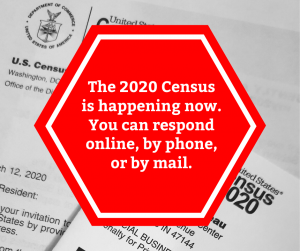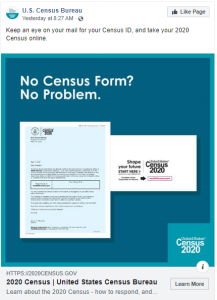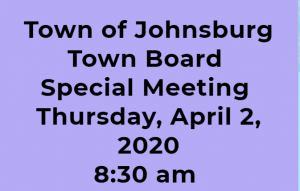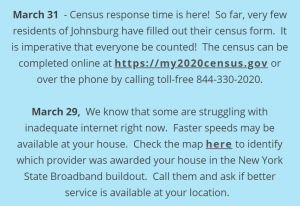
Responding to the Census
The 2020 Census is happening now. You can complete your questionnaire online, by phone, or by mail.
Your Invitation To Respond
The time is now. Help shape your future, and your community’s future, by responding to the 2020 Census.
Most households received their invitation to respond to the 2020 Census between March 12 – 20. These official Census Bureau mailings will include detailed information and a Census ID for completing the Census online.
In addition to an invitation to respond, some households will receive a paper questionnaire (sometimes known as the census form). You do not need to wait for your paper questionnaire to respond to the Census. Please complete your census form online, by phone, or by mail when your invitation to respond arrives.
The 2020 Census is for everyone.
During this time frame, some homes will receive a paper questionnaire (sometimes known as the census form). Please complete your form online, by phone, or by mail when your invitation to respond arrives. Visit my2020census.gov to begin.
How To Respond
The 2020 Census will ask a few simple questions about you and everyone who is or will be living with you on April 1, 2020.
For the first time, you can choose to complete the census online, by phone, or by mail. Find out more about each of these methods below:
Please note that if you are responding online, you must complete the census in one sitting, as you don’t have the ability to save your progress. See the questions the census asks here.
If you do not receive an invitation to respond from the Census Bureau, you may respond online or visit our Contact Us page to call our phone line.
Who Should Respond
The 2020 Census counts everyone living in the United States and its five territories (Puerto Rico, American Samoa, the Commonwealth of the Northern Mariana Islands, Guam, and the U.S. Virgin Islands).
One person should respond for each home. That person must be at least 15 years old. They should live in the home or place of residence themselves and know general information about each person living there. (For more information, visit Questions Asked.)
Please note: If you live in American Samoa, the Commonwealth of the Northern Mariana Islands, Guam, or the U.S. Virgin Islands, the process for completing the census will be 100% paper-based and led by Census takers. Visit Counting the Island Areas for more information.
Everyone Counts
The Census Bureau has specific operations and processes in place to count everyone, including those in group living situations such as college dorms, nursing homes, military barracks, and prisons.
Learn More
Who Should Be Counted and Where?
You should be counted where you are living and sleeping most of the time as of April 1, 2020. If you are responding for your home, count everyone who lives and sleeps there most of the time as of April 1, 2020. This includes young children, foster children, roommates, and any family members or friends who are living with you, even temporarily.
Please note that if someone is staying with you temporarily on April 1 due to the COVID-19 situation, they should be counted where they usually live. This includes college students, who should still be counted at school, even if they are home early because of the COVID-19 situation. If they live in student housing, the college will count them. If they live off-campus, they should respond for the off-campus address and include any roommates or other people living there.
If someone is staying with you on April 1 who doesn’t have a usual home elsewhere, please include them in your response.
People in some living situations—including students, service members, and people in health care facilities—may have questions about how to respond or where they should count themselves. You may also have questions if you are moving, have multiple residences, or have no permanent address.
For more information, please visit Who to Count.
Language Support
You can complete the census online or by phone in 13 different languages: English, Spanish, Chinese, Vietnamese, Korean, Russian, Arabic, Tagalog, Polish, French, Haitian Creole, Portuguese, and Japanese.
In addition, bilingual invitations and paper questionnaires in English and Spanish will be sent to select areas of the country.
To help you respond, the Census Bureau also offers webpages and guides in 59 non-English languages, including American Sign Language, as well as guides in Braille and large print. Visit Language Support to learn more.
Source:
US Census Bureau. “Responding to the Census.” 2020Census.Gov, 2020census.gov/en/ways-to-respond.html.



















